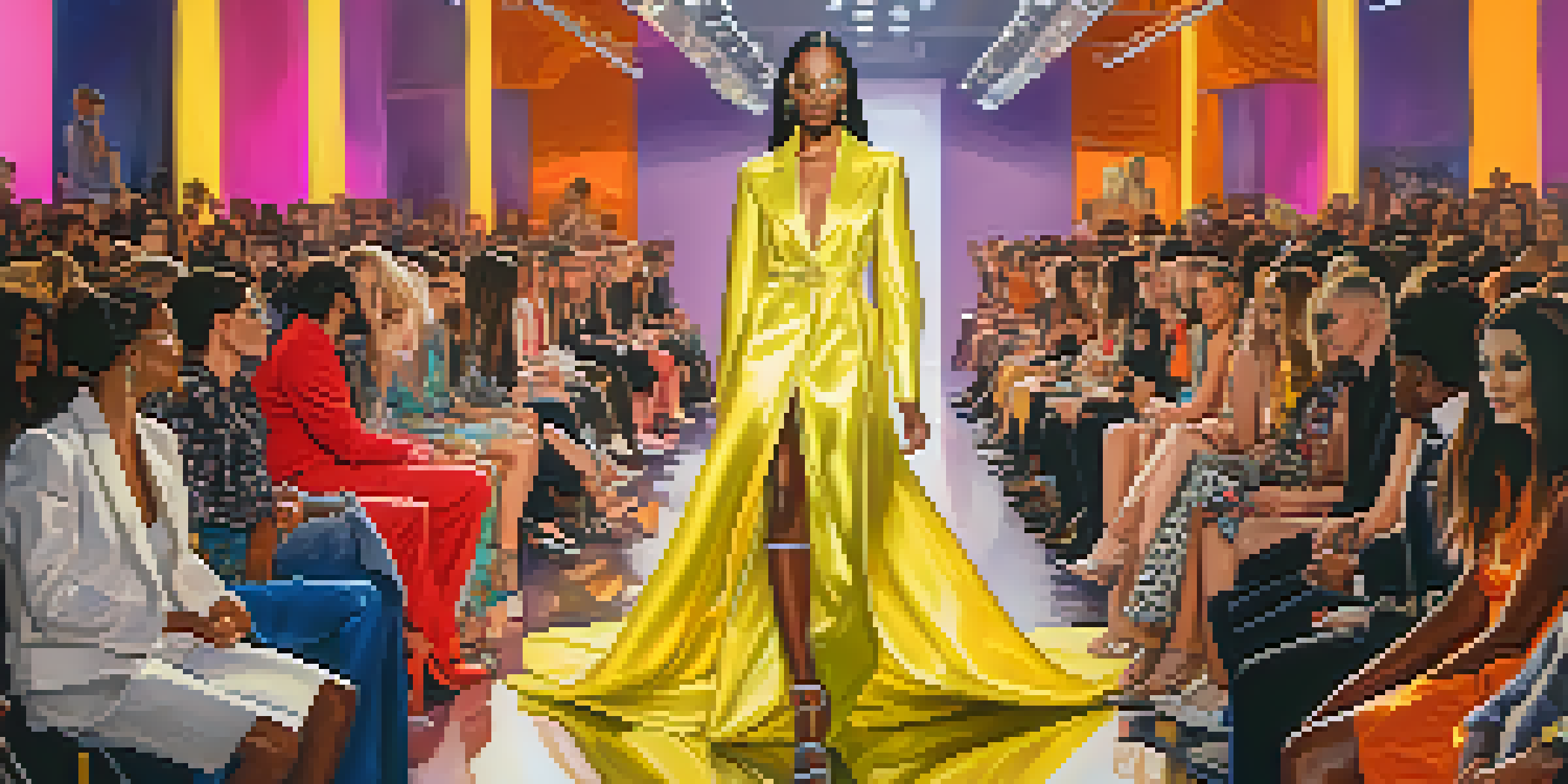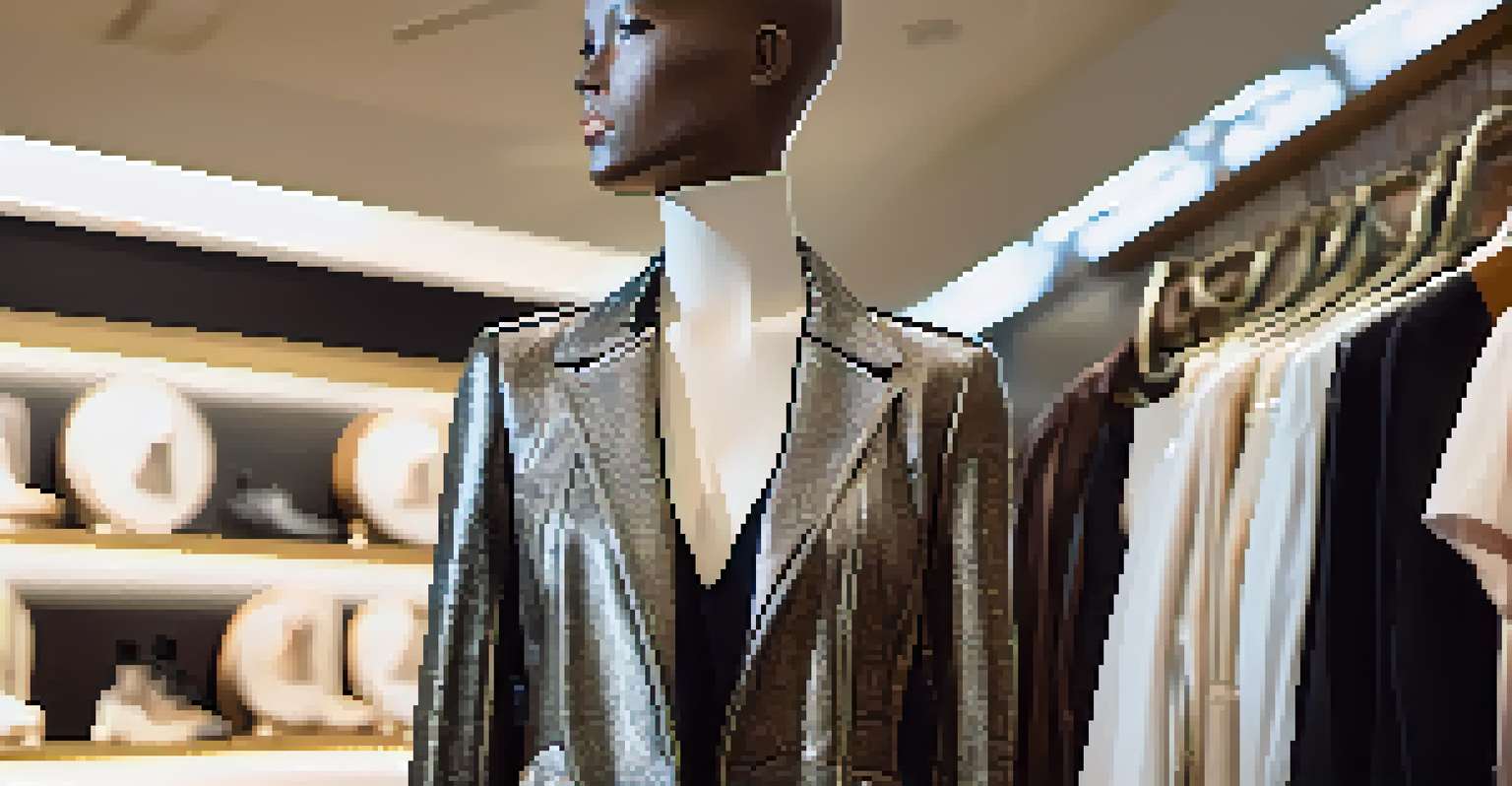The Impact of Gender Fluidity on Fashion Week Runways

Understanding Gender Fluidity in Fashion Context
Gender fluidity refers to a flexible approach to gender identity, where individuals may not strictly adhere to traditional categories of male or female. This concept is gaining traction in various areas of life, including fashion, which has long been a medium for self-expression. As society embraces more inclusive definitions of gender, the fashion industry is responding by breaking down barriers and encouraging creativity without limitations.
Fashion is the armor to survive the reality of everyday life.
Fashion has always been a reflection of cultural shifts, and the increasing visibility of gender fluidity is no exception. Designers are now challenged to rethink their collections, moving away from strictly gendered clothing to pieces that can be worn by anyone, regardless of their gender identity. This evolution not only celebrates individual expression but also promotes a broader acceptance of diverse identities within society.
For example, we see collections featuring models of various gender identities walking side by side on runways, showcasing how clothing can transcend traditional boundaries. This shift is not just about aesthetics; it signifies a deeper cultural change that encourages open-mindedness and fosters a sense of community among diverse individuals.
Fashion Week: A Platform for Gender Fluidity
Fashion Week serves as a critical platform for introducing and showcasing new trends, making it an ideal stage for gender fluidity to shine. Major fashion capitals, such as New York, London, and Paris, have begun to feature gender-neutral collections and models, signaling a shift in industry standards. This change allows designers to experiment with silhouettes and styles that cater to a broader audience, regardless of gender.

Notable designers like Gucci and Balenciaga have embraced gender fluidity, creating collections that defy conventional gender norms. By doing so, they not only challenge societal expectations but also inspire other designers to follow suit. The result is a vibrant tapestry of fashion that celebrates diversity, creativity, and freedom of expression.
Embracing Gender Fluidity in Fashion
The fashion industry is evolving to include gender fluidity, allowing for self-expression beyond traditional male and female categories.
Moreover, this evolution in Fashion Week runways encourages emerging designers to explore their unique perspectives on gender through their work. As more voices join the conversation, the industry is enriched with innovative ideas and styles that resonate with a wider audience, fostering inclusivity and acceptance.
The Role of Iconic Figures in Pushing Boundaries
Iconic figures in the fashion world, such as Billy Porter and Jaden Smith, have played significant roles in promoting gender fluidity on runways. Their bold choices challenge traditional fashion norms and encourage others to embrace their identities openly. By wearing garments that defy gender categorization, they inspire a younger generation to express themselves authentically.
Clothes aren't going to change the world, the women who wear them will.
These trailblazers not only captivate audiences with their fashion choices but also spark important conversations about the significance of gender representation in media. Their visibility challenges the status quo, compelling brands and designers to reconsider their approach to gender in their collections. As a result, fashion becomes a powerful tool for advocacy and social change.
Furthermore, as these figures continue to break barriers, they remind us of the importance of representation in fashion. By showcasing diverse identities on the runway, they empower individuals from all walks of life to embrace their uniqueness and redefine what it means to be fashionable.
Consumer Demand for Gender-Neutral Fashion
As society shifts towards a more inclusive understanding of gender, consumer demand for gender-neutral fashion has surged. Shoppers are increasingly looking for pieces that reflect their identities beyond traditional labels, resulting in a marketplace that values versatility and inclusivity. Brands that cater to this demand not only attract a wider audience but also foster loyalty among consumers seeking representation.
Retailers are responding by launching gender-neutral lines and expanding their offerings to include unisex options. This trend is not just about fashion; it represents a fundamental change in how we think about clothing and identity. Consumers are making it clear that they want to wear what feels right for them, regardless of societal expectations.
Consumer Demand Drives Inclusivity
As society embraces diverse identities, consumer demand for gender-neutral fashion is prompting brands to expand their offerings.
For example, companies like ASOS and H&M have introduced unisex collections that appeal to a diverse customer base. By embracing this shift, brands can cultivate an environment where everyone feels seen and valued, ultimately driving positive change within the fashion industry.
The Impact of Social Media on Gender Fluidity in Fashion
Social media has become a powerful platform for amplifying voices and showcasing trends, including the rise of gender fluidity in fashion. Platforms like Instagram and TikTok allow users to express their styles and identities, fostering a sense of community among those who challenge traditional norms. This online presence not only influences what we see on runways but also shapes consumer preferences.
Influencers and content creators who identify as gender fluid or non-binary are leading the charge, sharing their unique perspectives and styles with followers. Their visibility encourages others to explore their identities and experiment with fashion in ways that feel authentic. This democratization of fashion allows for a broader representation that resonates with diverse audiences.
Additionally, social media has enabled brands to engage directly with their consumers, fostering a two-way dialogue about gender and fashion. This interaction helps brands understand their audience better and allows them to adapt their collections to meet the desires of a more inclusive market. As a result, fashion becomes a collaborative effort that reflects the voices of its community.
Challenges Faced by Gender Fluid Designers
While the fashion landscape is changing, gender fluid designers still face significant challenges in gaining recognition and acceptance. Despite the growing demand for inclusive fashion, many brands remain hesitant to fully embrace gender fluidity, often sticking to traditional gendered collections. This reluctance can hinder the visibility of talented designers who are pushing boundaries and redefining style.
Additionally, the fashion industry is notorious for its rigid structures and established norms, making it difficult for newcomers to break through. Gender fluid designers often have to navigate a complex web of expectations while remaining true to their artistic vision. This struggle can be discouraging, but many continue to persevere, driven by a passion for their craft and a desire for change.
Social Media Amplifies Gender Fluidity
Platforms like Instagram and TikTok are empowering individuals to showcase their gender identities, influencing both fashion trends and consumer preferences.
Moreover, the lack of representation in fashion media can perpetuate the cycle of invisibility for gender fluid designers. By showcasing only a narrow range of identities and styles, the industry risks alienating a diverse audience. However, as conversations about inclusivity continue to grow, there is hope that more platforms will emerge to celebrate and support gender fluid talent.
Looking Ahead: The Future of Gender Fluidity in Fashion
The future of gender fluidity in fashion looks promising, as the industry continues to evolve and adapt to changing societal norms. With consumers increasingly demanding inclusivity, designers are likely to explore new ways to challenge traditional gender boundaries. This ongoing dialogue around gender in fashion will likely lead to even more innovative designs and collections that cater to a diverse audience.
Furthermore, as more major brands embrace gender fluidity, we can expect to see a ripple effect throughout the industry. This could encourage smaller, emerging designers to follow suit, creating a vibrant marketplace filled with unique styles that reflect a variety of identities. The future holds exciting possibilities for fashion that celebrates individuality and fosters a sense of belonging.

Ultimately, the journey towards a more inclusive fashion industry is ongoing, but the momentum is undeniable. As we continue to champion diversity and self-expression, the fashion world will become a more welcoming space for everyone, allowing individuals to showcase their true selves through style.